Colchicum is an unpretentious flower resembling crocuses only much larger. Even in ancient Russia, these goblet-shaped flowers were called winteries or autumn trees. Known for its healing properties and is often used in both traditional and traditional medicine.
Content
Characteristics of the Colchicum plant
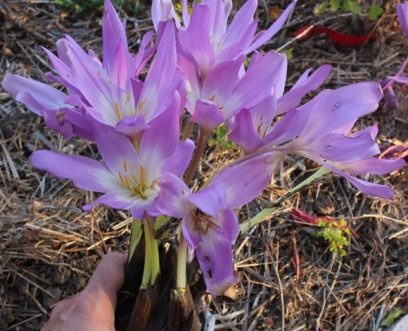 Colchicum (colchicum autumnale), colchicum autumn - perennial meadow crop. A detachment of lilac Distributed in all countries of Europe, in the western part of Russia. The name is associated with the flowering period at the end of the season - in timelessness.
Colchicum (colchicum autumnale), colchicum autumn - perennial meadow crop. A detachment of lilac Distributed in all countries of Europe, in the western part of Russia. The name is associated with the flowering period at the end of the season - in timelessness.
The flower has a straight stem 10-30 cm high, a spontaneously nimbus with 6-45 petals, depending on the species. A wide range of color shades: creamy, lilac, yellow, pink. The root system is corm. From one onion grows 4 flowers. The most beautiful varieties:
- White. It is rare in the wild. It has a yellow color in the center, with cream edging.
- Terry flowers are small in diameter, up to 5 cm. It blooms later than the other types of autumn, so it is not suitable for a climate where frosts appear early. Appearance, from the name - has dozens of small petals, which gives it such a “terry”.
- White terry. Even more creamy petals.
- Neddist - pale pink, blooms in mid-September.
Colchicum breeding
Landing, and care will be able to any summer resident or gardener. Bulbs and seeds are used to breed colchicum. The easiest way is with young onions.
Bulbs
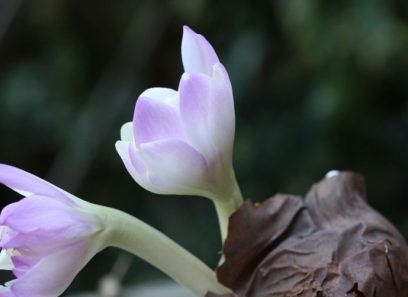 Material for planting is purchased in a store or on the market, or made by yourself. With self-preparation, some subtleties are observed:
Material for planting is purchased in a store or on the market, or made by yourself. With self-preparation, some subtleties are observed:
- dig out very carefully, without damaging the skin;
- washed without breaking the scales that cover the bulb on the outside;
- place water with potassium permanganate or in a weak solution of potassium permanganate;
- dried in a cool dark room;
- prepare the soil and plant.
The optimal time for planting colchicum onions is the 20th of August. Before planting, prepare the soil: 5 liters of humus or manure per 1 m2 and ½ bucket of river sand. Dig up the ground lightly. At the time of planting, fertilize - 1 liter of wood ash and 1.5 dess. tablespoons of superphosphate per 1m2.
Bulbs are planted with an interval of at least 20 cm in the holes with a depth of 15 cm. Then they are carefully watered and covered with foliage.
Seeds
When they want to plant more flowers, they use seeds. To plant a colchicum flower with autumn seeds is not an easy task. Firstly, the seeds need to be cooled in advance, for example, in the refrigerator, in a damp rag. Secondly, soak. Thirdly, in this way a flower is planted only blooming in spring. The flower stalk appears no earlier than 7 years. Growing with this method has one advantage - the plant will grow healthy.
In the spring, a seed box begins to form. In summer, it fully ripens and dries. Then it crumbles and seeds randomly fall to the surface of the soil. During this period they are collected. Choose a seed box just starting to get dark. They cut it off and put it in a cool, well-ventilated place to dry.Planting material is not stored for a long time, it is immediately used.Seeds are soaked and left for several days. 1-2 times a day they are washed. Prepare small holes for sowing: first, water the earth, then make indentations 3-5 cm. Seeds are thrown into the holes, and they are covered with earth. Irrigate regularly. No other special care is required. The following year, in the spring, seedlings appear. The soil under them needs to be loosened, watered. Thin out seedlings once.
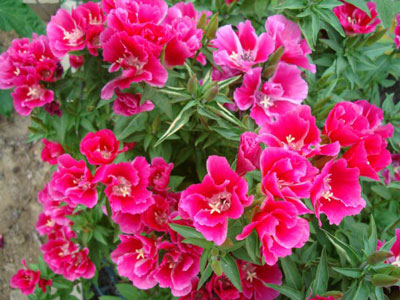 You may be interested in:
You may be interested in:Colchicum is planted in autumn, but it is possible to store seeds until spring in the refrigerator. Using this method of planting, a completely healthy plant of a certain variety grows.
Plant care
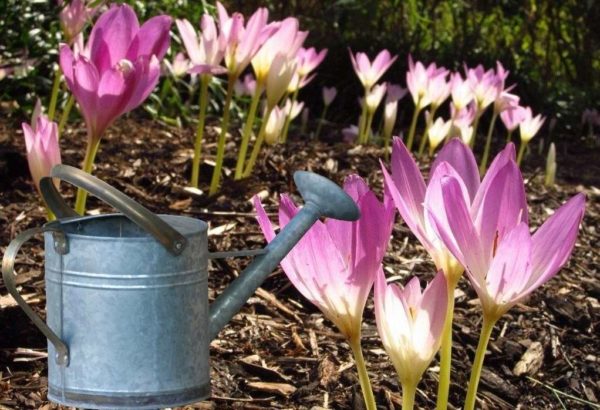 The soil should not be swampy. Colchicum does not require regular watering. In the season when it is planted, there is usually no lack of moisture due to melting snow and elevated groundwater levels. It is watered only in the fall in the absence of rain. Do this carefully, trying not to wet the corollas.
The soil should not be swampy. Colchicum does not require regular watering. In the season when it is planted, there is usually no lack of moisture due to melting snow and elevated groundwater levels. It is watered only in the fall in the absence of rain. Do this carefully, trying not to wet the corollas.
There are no special conditions for the autumn banner:
- nourished land;
- sun or partial shade;
- plant bulbs (approximately once every 5 years).
How to feed a plant
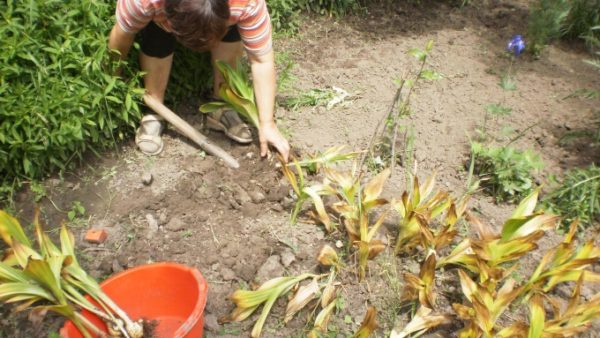 A couple of times a season make top dressing. Dilute the solution in a low concentration: 2 g of nitrophosphate per liter of water. 1 m2 of land is poured 15 liters of such a mixture. The soil is loosened regularly so that the soil is enriched with oxygen.
A couple of times a season make top dressing. Dilute the solution in a low concentration: 2 g of nitrophosphate per liter of water. 1 m2 of land is poured 15 liters of such a mixture. The soil is loosened regularly so that the soil is enriched with oxygen.
When the flowering time is over, you do not need to cut the buds. Break off only the petals that have already wilted. Colchicum, blooming in spring, planted in September. Blooming in the fall - at the end of summer.
Pest Prevention and Destruction
The beauty of colchicum can be ruined by slugs, snails, mollusks and molds micelles. All pests appear due to moist soil. Excess moisture takes on lime, calcium carbonate. You can sprinkle soil with crushed shells, small pebbles or egg shells. This will scare away slugs and snails. A fungicide (Bordeaux liquid, sulfur color) will help from a fungal disease.
A good trap for mollusks and an obstacle for snails will be the plastic bottles filled with water spread along the perimeter of the flower garden cut along the perimeter.
Healing effects
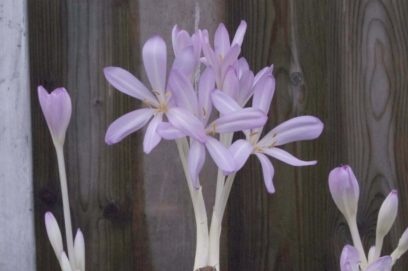 Colchicum autumn is not just a garden flower. It refers to medicinal plants, that is, it has medicinal properties useful to humans.
Colchicum autumn is not just a garden flower. It refers to medicinal plants, that is, it has medicinal properties useful to humans.
Medicines obtained from it have the following effects:
- painkillers;
- easy laxative;
- antiemetic;
- anti-inflammatory;
- antihypertensive;
- diuretic.
The effect on the body is due to colchamine, colchicine and phytosterol contained in colchicum.
Phytosterol reduces the level of bad cholesterol, which affects the heart, liver and the entire vascular system. Cholesterol accumulates on the walls of the arteries and causes them to become clogged. Phytosterol counters this. He also has such a property as the prevention of cancer. Research on this plant is still being carried out, and all its effects on humans have not yet been fully studied.
There is an opinion in the scientific community: the use of this substance is not useful for all people. Therefore, only doctors (cardiologists, oncologists, therapists) have the right to prescribe it.
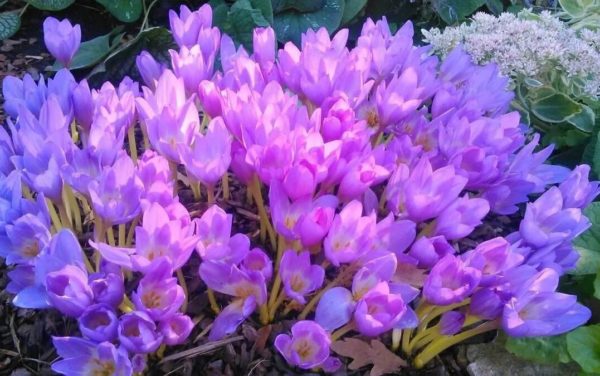 Colchicine is used as a remedy against gout (deposition of uric acid salts in tissues, accompanied by pain and itching of the big toes). With Behcet's syndrome, primary biliary cirrhosis of the liver, multiple sclerosis, Mediterranean fever.
Colchicine is used as a remedy against gout (deposition of uric acid salts in tissues, accompanied by pain and itching of the big toes). With Behcet's syndrome, primary biliary cirrhosis of the liver, multiple sclerosis, Mediterranean fever.
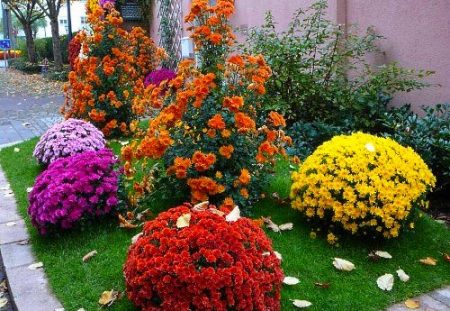 You may be interested in:
You may be interested in:Colchicum is poisonous. A damaged bulb can cause burns to the skin of the hands. Ingestion is fraught with poisoning of the body, up to a fatal outcome. Symptoms of poisoning - nausea, dizziness, a sharp drop in blood pressure. Extractive substances of this plant obtained from it by a production method possess medicinal properties. This means that to achieve a healing effect, very little is needed, and if you make a simple decoction or infusion of colchicum, you get poison. Therefore, the useful qualities of colchicum are given for informational purposes only.




 Sow in the ground, without seedlings: 10 beautiful and unpretentious flowers
Sow in the ground, without seedlings: 10 beautiful and unpretentious flowers Platicodon planting and outdoor care
Platicodon planting and outdoor care Hosta - planting and care in the open ground in the Urals
Hosta - planting and care in the open ground in the Urals Oleander - care and growing at home
Oleander - care and growing at home